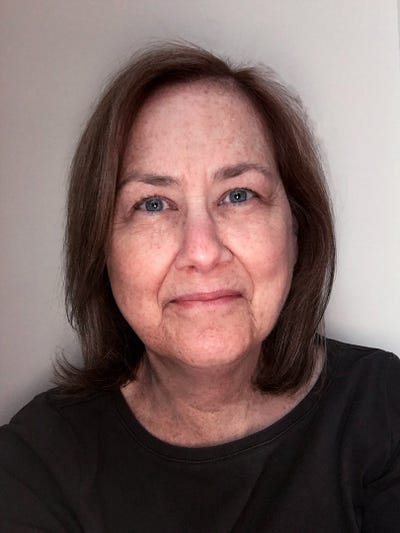Say "Cheese"
April 1, 2005
Megan Rowe
BY MEGAN ROWE
ESCAPISM: A whimsical water tower entrance beckons guests to the tropical scene inside. The thermometer over the bar records the current beer temperature. |
HANG LOOSE: Tiki huts, murals and nautical touches set a beach tone. |
FRONT WOMAN: Debbie Eybers steers the chain's growth. |
COUSINS: Jimmy (left) teamed up with distant shirttail relative Warren Buffett for a benefit at the Omaha opening last year. |
If you're going to name a restaurant after a pop song, it probably helps that the song already refers to a popular food—say, cheeseburgers. But Cheeseburger in Paradise isn't just about a sandwich; it implies a whole lifestyle, a hangloose way of living aspired to by flocks of Parrotheads (i.e., Jimmy Buffett devotees). That translates into a ready audience that cuts across a wide swath of the U.S. landscape.
Cheeseburger in Paradise, name aside, is not all about Jimmy. Rather, it's about creating a laid-back environment where someone like Buffett (and the like-minded) would feel comfortable relaxing, pick up a good meal and have a few laughs. So, while there is a gift shop hawking Jimmy apparel and other memorabilia, you don't see Jimmy's mug plastered all over the interior, and his songs don't dominate the playlist.
So far, Cheeseburgers have been drawing from all over the demographic map. So, as the evening progresses (it's a dinner-only operation), the crowd complexion segues from mature guests, to families, to dual-income couples, to singles. The last group includes the biggest fans of the nightly live music. Weekly karaoke and open microphone nights are popular, as are special events such as full moon parties. "We have to be careful with the ambiance and the music levels to make everybody feel comfortable any time they come in," points out Debbie Eybers, president of the chain, which is a joint venture with Outback Steakhouse.
When Buffett first mulled the idea of starting a burger-focused casual dining chain, one of his companies, Margaritaville Holdings, was already in the business of building and running restaurants. So why turn to Outback? For one thing, Margaritaville Cafes are a different animal—big (20,000 square feet-plus), showy destination restaurants that function in part as a shrine to the singer, versus Cheeseburger, which is more of a neighborhood drop-in joint. Execs at the home office reckoned the country had room for many more Cheeseburgers than Margaritavilles, but deemed themselves neither equipped nor inclined to enter the development game to that degree. So Buffett started talking with Outback's then-CEO, Chris Sullivan, about expanding his idea, and in 2000, they inked a partnership. Eybers, at the time a joint venture partner with Outback, jumped at the chance to join the party. "I'm a total music geek," she admits. "I said, ' awesome—I'd love to do it.'"
While Buffett maintains a low profile—he is only visible when he shows up to do a brief benefit appearance in conjunction with the opening of a new Cheeseburger location—he had input on everything from the menu to the interior. "Jimmy is an incredible person known for being very hands-on about everything," says Patrick McBride, whose company designed the Cheeseburger in Paradise prototype as well as Buffett's Margaritaville Cafè concept (see box at right). "Nothing is going to be built unless he has a chance to give a wink and a nod that it's okay. But he gives us a lot of creative freedom to visualize what it should be." For the food, a team of chefs developed the core menu and Buffett participated in a panel to decide what made the cut. Besides what Eybers calls the best cheeseburger in the world (served with "french fried potatoes"), it's a mix of starters, burgers, ribs, wings, seafood selections and signature choices like minicheeseburgers and, for dessert, chocolate nachos. A "little parakeets" menu caters to kids. Early menus featured pizzas, but they were dropped because of the preparation involved and disappointing sales.
WITH A RELAXED PARTY ATMOSPHERE, A SPRAWLING BAR AND a menu of about 40 mixed frozen and other concoctions, it should surprise no one that about 30 percent of total sales comes from the bar side. "We have the best drinks," Eybers boasts. "We wanted to have the best piÒa colada in the whole world, and we've got it," she says. The house drink, the Cheeseburger in Paradise, is layered: piÒa colada, strawberry daquiri, margarita and a rum runner. "We sell a lot of those foo-foo drinks and a lot of beer," Eybers explains. A lot of really cold beer, as a huge thermometer over the tiki bar proves.
The earliest Cheeseburger units were deliberately clustered in the Midwest. "The concept was escapism," Eybers explains. "Where better to see if it would work than in a place that was freezing cold?" With Outback's expansion muscle, Cheeseburger is expected to grow from 13 to 200 locations within the next four years. Growth will emanate out from the Midwest and Northeast. Expansion is following the Outback model of joint ventures, with managing partners developing their own markets.
Eybers is optimistic about the possibilities for the brand. "If we do our jobs right, we can really grow this and grow like Outback, I think. But we have to be careful about growth, we have to be smart and hire the right people," Eybers says.
Will It Fly?
Cheeseburgers apparently generate some pretty compelling numbers. Cheeseburger in Paradise locations average about $4 million in annual sales, compared to opening costs of about $2-$2.5 million. "If they can continue that way, it's nothing short of sensational," observes Robert Derrington, senior restaurant analyst with Morgan Keegan in Nashville.
Derrington also thinks the low check average bodes well for the budding chain's popularity. He thinks it's not unsreasonable to expect 200 Cheeseburger locations "and realistically, Outback may be able to come up with a multiple of that."
About the Author
You May Also Like






